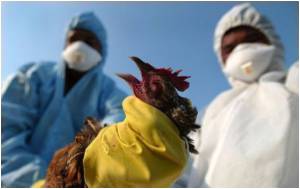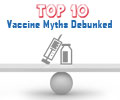Laboratory animals have been effectively safe-guarded from lethal hantavirus disease by administering a novel approach that combines DNA vaccines and duck eggs.

Hantavirus causes a condition known as hantavirus pulmonary syndrome (HPS), which has a case fatality rate of 35-40 percent. Currently there are no vaccines, prophylactics, or therapeutics to prevent or treat this highly pathogenic disease.
In this study, the research team used a hamster model of Andes virus, which is the predominant cause of HPS in South America and the only hantavirus known to be transmitted person-to-person. Infection of Syrian hamsters with Andes virus, as demonstrated in earlier studies at USAMRIID, results in a disease that closely mimics human HPS in incubation time, symptoms of respiratory distress, and disease pathology. This makes it an ideal system for evaluating the feasibility of postexposure protection strategies.
Collaborating with Aldevron of Fargo, N.D. and the Universidad del Desarrollo in Santiago, Chile, Hooper and his team first evaluated a natural product, human polyclonal antibody, which was obtained as fresh frozen plasma (FFP) from a patient who survived HPS. Their results indicate that FFP shows promise as a post-exposure preventive treatment for HPS.
The team then vaccinated ducks with a DNA vaccine against Andes virus. This vaccine, initially developed and tested at USAMRIID, uses genetic material, or DNA, that encodes a specific hantavirus gene to elicit an immune response in the recipient.
Next, they purified an antibody called IgY from the yolks of the duck eggs. This purified IgY, as well as a similar version produced in duck eggs, was capable of neutralizing Andes virus when tested in cell culture. More importantly, it also protected Syrian hamsters from lethal HPS—even when administered as a single injection several days after the hamsters had been exposed to a lethal dose of virus.
Advertisement
According to Hooper, another advantage of this technique is that duck IgY naturally loses a part of the antibody that has been associated with "serum sickness" when animal antibodies have been used in humans, making the product potentially less reactogenic.
Advertisement
In addition, the authors suggest, the flexibility of the DNA vaccine/duck egg system could be applied to the production of antibodies against other infectious agents and toxins.
Source-Eurekalert















